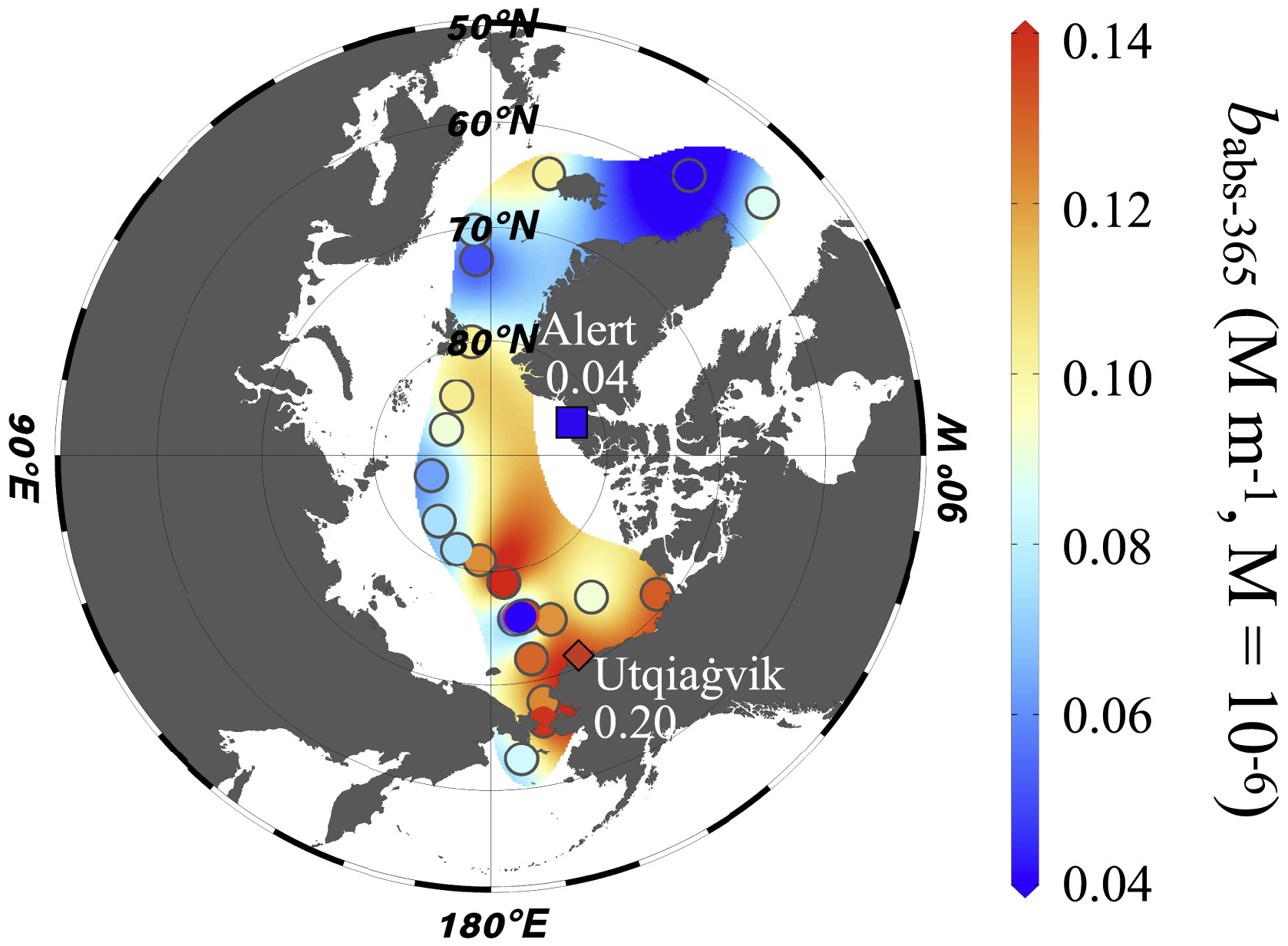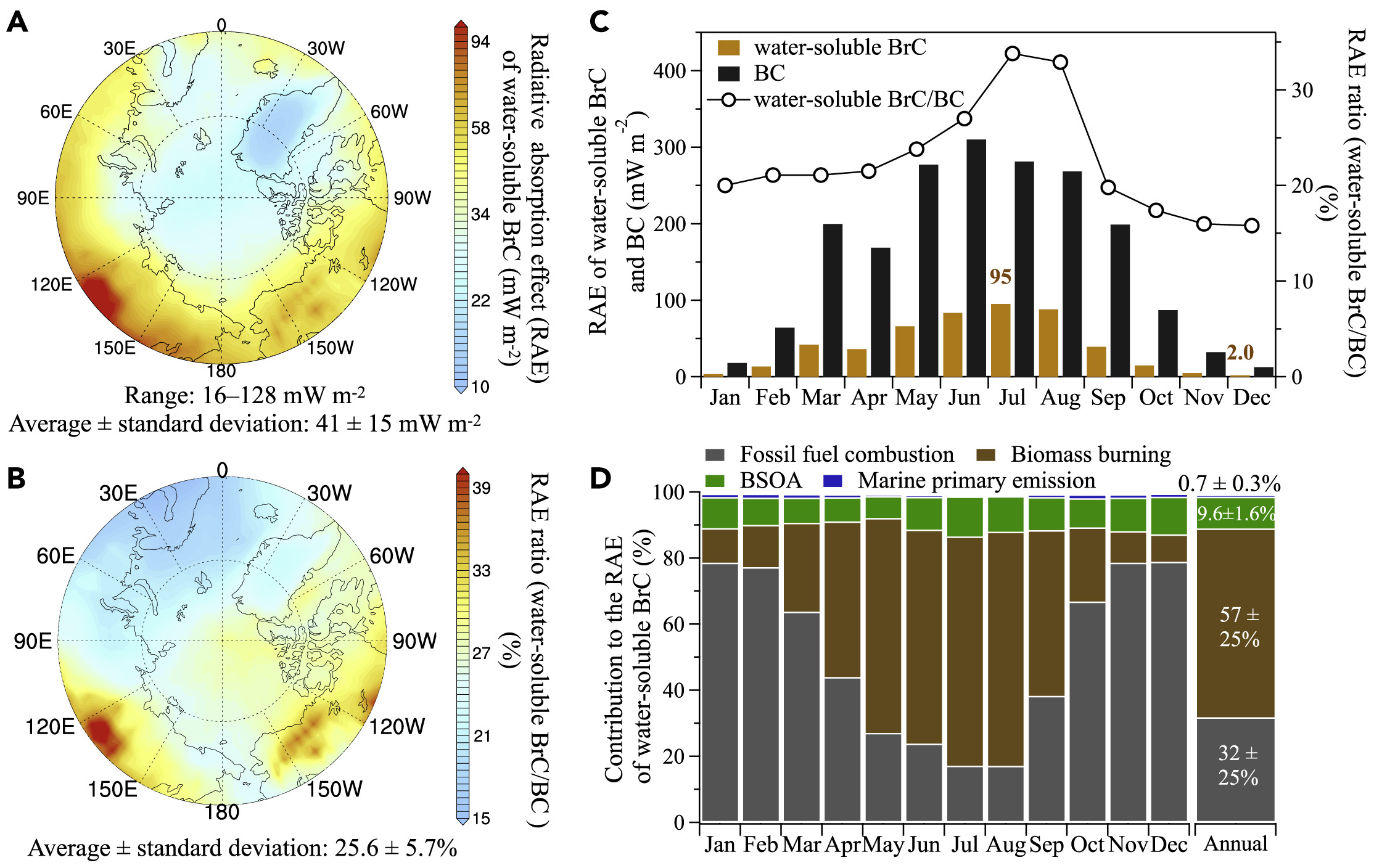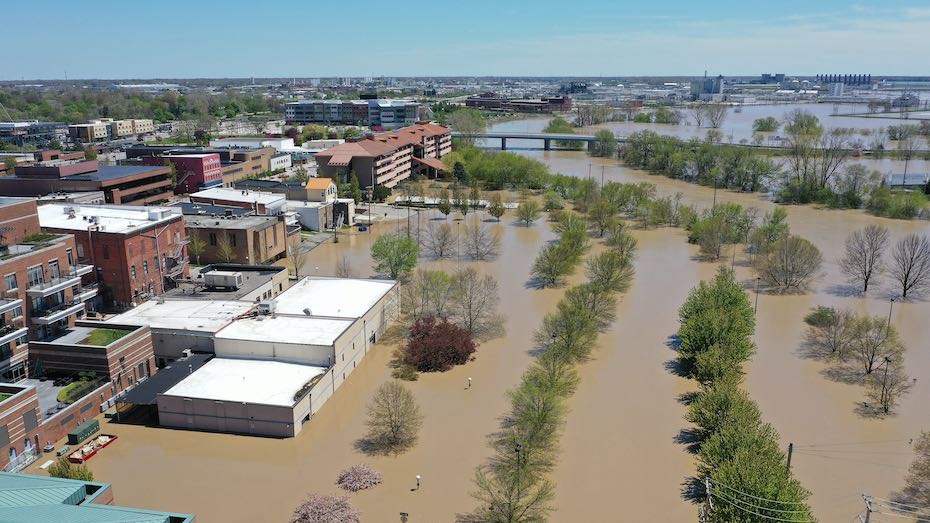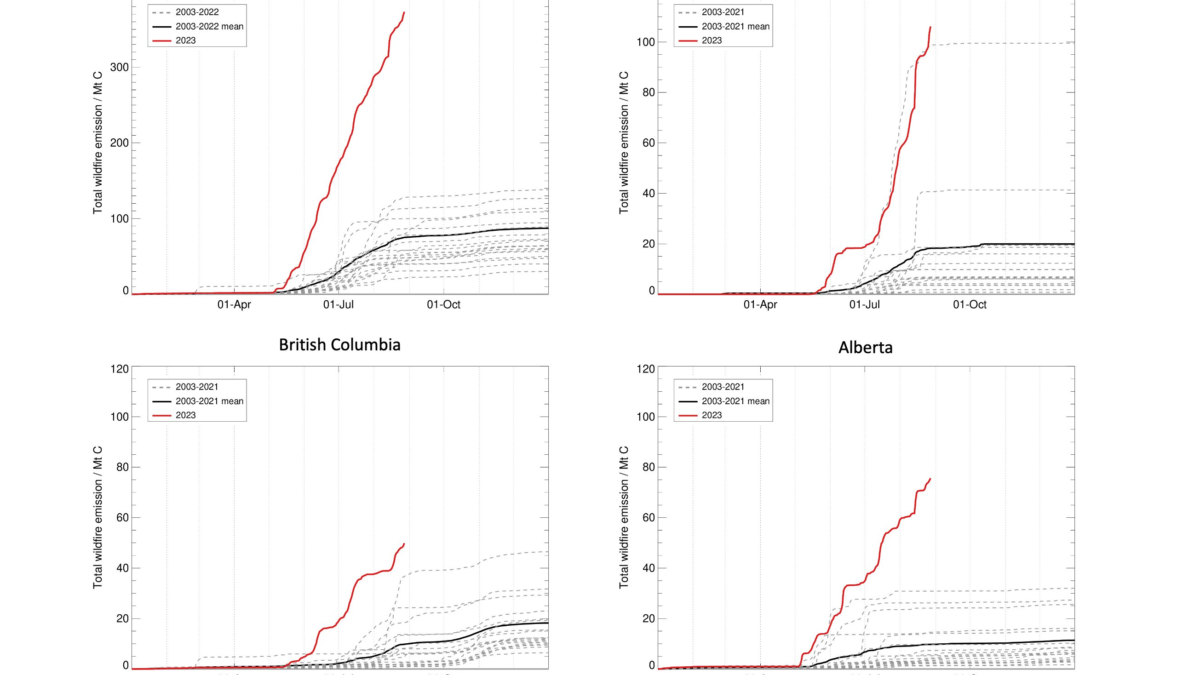Brown carbon from biomass burning imposes strong Arctic warming feedback – “We expect an increasing importance of brown carbon in the warming of the circum-arctic in the future”

18 March 2022 (Max Planck Institute for Chemistry) – Rapid warming in the Arctic and accelerated glacier and sea ice melting have a huge impact on the global environment. Greenhouse gases, such as carbon dioxide, and black carbon aerosols are well-known warming agents. In contrast, atmospheric, light absorbing brown carbon particles belong to the least understood and most uncertain contributors in the Arctic and surrounding regions. An international group of researchers, led by the Institute of Surface-Earth System Science from Tianjin University, China, and the Max Planck Institute for Chemistry, Mainz, Germany, combined direct observations of atmospheric brown carbon particles during a two-month circum-Arctic cruise with comprehensive global model simulations. Their study shows that light absorbing brown carbon, mainly originating from biomass burning, can impose strong warming in the Arctic.
Identifying the warming agents is key to understanding the Arctic warming and finding potential mitigation solutions,” explains Yafang Cheng who heads the Minerva Research Group of the Max Planck Institute for Chemistry in Mainz. The warming effects of brown carbon particles have either been ignored in climate models or estimated with large uncertainties, ranging from approximately 3 per cent to over 50 per cent relative to the warming effect of black carbon. However, observations of brown carbon in the Arctic are sparse, hindering representative assessment of its warming effect in the circum-Arctic.

Combination of observations from a circum-Arctic cruise and model simulations
The international research group thus measured the light-absorption of water-soluble brown carbon from water extracts of aerosol samples (PM10, particulates with diameter < 10 µm) collected from late July to September 2017 during a circum-Arctic cruise. In order to derive source-specific light absorbing properties of brown carbon the group then combined the measured data with the Community Earth System Model. This is a comprehensive numerical simulation of the Earth system consisting of atmospheric, ocean, ice, land surface, carbon cycle, and other components.
Both observations and modelling showed that water-soluble brown carbon on Arctic warming mainly originates from biomass burning in the mid- to high latitudes of the Northern Hemisphere. The combustion contributes approximately 60% of the warming effect of brown carbon in the arctic region on an annual average. In comparison, fossil fuel combustion accounted for approximately 30% of the total radiative absorption effect. “During the summer months, water soluble brown carbon had an average radiative forcing of approximately 90 mW m-2 and, accordingly, a warming effect of approximately 30% relative to black carbon. And, the water insoluble brown carbons may further increase the overall warming effect,” said Siyao Yue, the first author and postdoctoral researcher in Yafang Cheng’s group. These findings highlight the strong impact of biomass burning on Arctic warming, especially in the summertime when Arctic ice melting is most sensitive to the warming.
As climate change is projected to increase the frequency, intensity and spread of wildfires, which in turn will reinforce the arctic warming and further contribute to global warming, forming a positive feedback. “We expect an increasing importance of brown carbon in the warming of the circum-arctic in the future.” said Pingqing Fu, professor at the Tianjin University. “Because biomass burning is also a major source of black carbon, our results highlight the importance of managing vegetation fires, especially in the mid- to high latitudes of the Northern Hemisphere, to mitigate the warming in the Arctic region,” added Yafang Cheng.
Brown carbon from biomass burning imposes strong Arctic warming
Brown carbon from biomass burning imposes strong circum-Arctic warming
ABSTRACT: Rapid warming in the Arctic has a huge impact on the global environment. Atmospheric brown carbon (BrC) is one of the least understood and uncertain warming agents due to a scarcity of observations. Here, we performed direct observations of atmospheric BrC and quantified its light-absorbing properties during a 2-month circum-Arctic cruise in summer of 2017. Through observation-constrained modeling, we show that BrC, mainly originated from biomass burning in the mid- to high latitudes of the Northern Hemisphere (∼60%), can be a strong warming agent in the Arctic region, especially in the summer, with an average radiative forcing of ∼90 mW m−2 (∼30% relative to black carbon). As climate change is projected to increase the frequency, intensity, and spread of wildfires, we expect BrC to play an increasing role in Arctic warming in the future.
Brown carbon from biomass burning imposes strong circum-Arctic warming



One Response
Comments are closed.